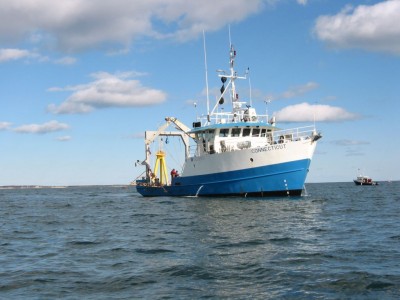Argonne National Laboratory Wins Award for Ocean-Going Climate Observatory
Published: 27 August 2008
Mobile facility to provide key data about atmosphere/ocean interface for use in climate models.
Contact: Lynne Roeder, ARM Public Information Officer, 509.372.4331
The U.S. Department of Energy’s Office of Science has awarded Argonne National Laboratory a $2.6 million/year contract to design, build, and operate a mobile laboratory for obtaining cloud and atmospheric property measurements around the world. Extending the current measurement capabilities of the DOE’s Atmospheric Radiation Measurement (ARM) Climate Research Facility, the new ARM Mobile Facility will further DOE’s efforts to improve scientific data and models in support of global climate studies.

Building from the concept for ARM’s first mobile observatory, now in China on its fourth deployment, the second mobile facility, or AMF2, will include additional capabilities to support ocean-based deployments. Oceans cover the majority of the Earth’s surface and, as such, are a critical component of climate change. They are, however, critically under-sampled relative to land-based measurements.
“This new capability is critical for our Climate Change Research Program to achieve its long-term performance measure—namely, to deliver improved scientific data and models about the potential response of the Earth’s climate and terrestrial biosphere to increased greenhouse gas levels,” said Dr. Wanda Ferrell, ARM Program Director in the Office of Environmental and Biological Research.
Instrumentation for the AMF2 will be similar to the original AMF and the ARM fixed sites, with enhancements mandated for a variety of ship and marine deployments—a central design criteria for the new facility. Principle among these will be motion stabilized platforms for many of the position-sensitive instruments. Instrumentation to obtain water-specific measurements, such as temperature, salinity, current speed and ocean surface state (e.g., calm or rough) will also be included to help characterize the atmosphere/ocean interface.
With the possibility of a dispersed ship-based deployment, all components, including the data system, will be highly modular and capable of being distributed widely about a ship. To minimize safety concerns caused by power and data cables and to reduce set-up time, the AMF2 will use wireless technology as a primary means of communication. This principle will also allow for more flexibility during land deployments.
In addition, to reduce set-up time and the overall size of the AMF2, instrument operating systems will leverage ongoing ARM efforts to utilize “virtual machines.” This approach is intended to accommodate many instrument data systems on a single computer or server rather than a separate laptop or computer for each instrument.
The first two years of the contract will be for the design and build phase, with initial deployment of the facility scheduled in 2010. Argonne will be aided in the design and build effort by scientists from Woods Hole Oceanographic Institution and the National Renewable Energy Laboratory. As part of the subcontract with Woods Hole, the research vessel Connecticut, operated by the University of Connecticut, will be used for testing the AMF2 instrumentation.
“Argonne is excited about the opportunity to participate in this expansion of ARM and provide a means to improve our understanding of climatologically important processes, particularly over the Earth’s oceans,” said Brad Orr, Argonne’s staff scientist who will co-lead the AMF2 team along with Dr. Rich Coulter.
The ARM Climate Research Facility is a DOE Office of Science user facility. The ARM Facility is operated by nine DOE national laboratories, including .
Keep up with the Atmospheric Observer
Updates on ARM news, events, and opportunities delivered to your inbox
ARM User Profile
ARM welcomes users from all institutions and nations. A free ARM user account is needed to access ARM data.


















